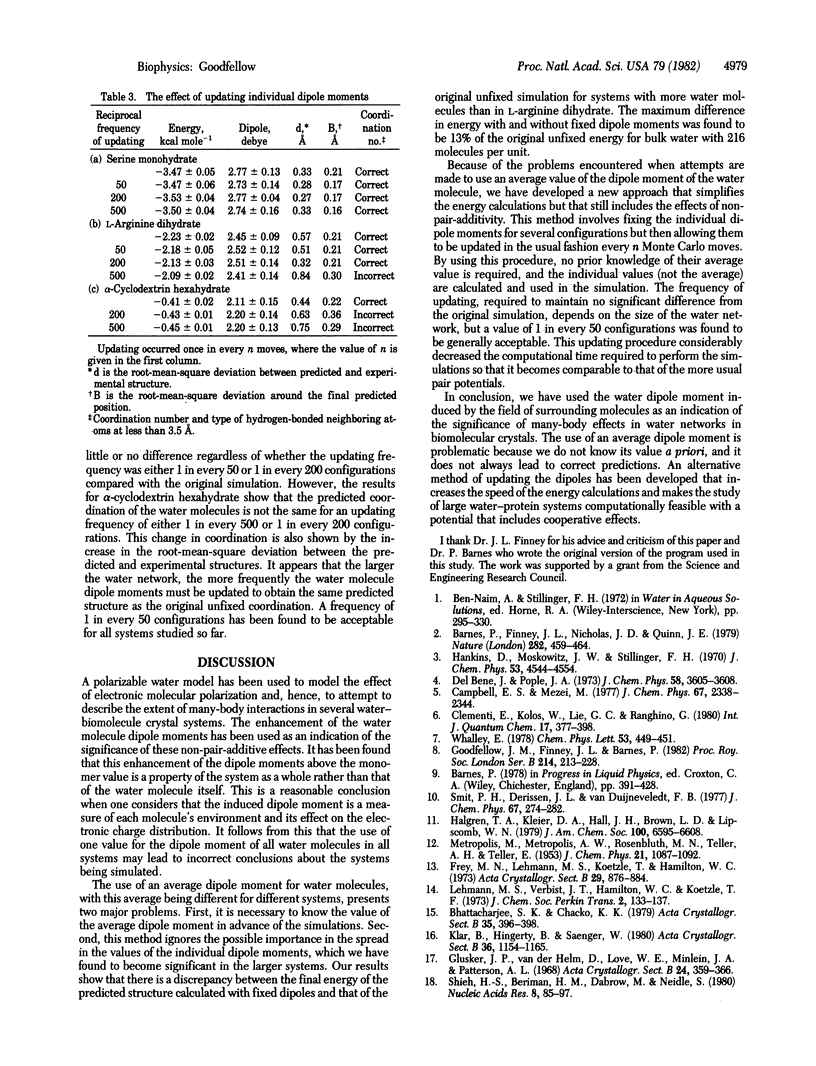Abstract
Monte Carlo computer simulation techniques have been used to model non-pair-additive (cooperative) effects in the water organization around several biomolecules. Although most models for water assume pair-additive potentials, both quantum mechanical calculations and experimental data indicate that cooperative effects are not negligible in hydrogen-bounded systems such as water. The many-body polarizable electropole (PE) model for water is used to examine the extent and the consequences of this cooperative behavior in several biomolecule hydrate crystals. Increases in the dipole moments of water molecules are predicted in all systems studied so far and can be as much as 50% more than the monomer value of 1.855 debyes. The average value of the individual dipole moments for any one system differs from that of another system and, therefore, should be considered a property of the system and not of the water molecule itself. When this previously calculated average value of the dipole moment for water molecules in a given system is used as a fixed parameter in the simulation, we find differences between this fixed calculation and the original unfixed simulation. An alternative procedure, which allows for a spread in dipole moments and is not dependent on a predetermined average value, has been developed to make simulations of large water-protein systems, including cooperative effects, computationally feasible.
Full text
PDF


Selected References
These references are in PubMed. This may not be the complete list of references from this article.
- Glusker J. P., Van der Helm D., Love W. E., Minkin J. A., Patterson A. L. The molecular structure of an azidopurine. Acta Crystallogr B. 1968 Mar 15;24(3):359–366. doi: 10.1107/s0567740868002372. [DOI] [PubMed] [Google Scholar]
- Goodfellow J. M., Finney J. L., Barnes P. Monte Carlo computer simulation of water-amino acid interactions. Proc R Soc Lond B Biol Sci. 1982 Jan 22;214(1195):213–228. doi: 10.1098/rspb.1982.0005. [DOI] [PubMed] [Google Scholar]
- Shieh H. S., Berman H. M., Dabrow M., Neidle S. The structure of drug-deoxydinucleoside phosphate complex; generalized conformational behavior of intercalation complexes with RNA and DNA fragments. Nucleic Acids Res. 1980 Jan 11;8(1):85–97. doi: 10.1093/nar/8.1.85. [DOI] [PMC free article] [PubMed] [Google Scholar]


